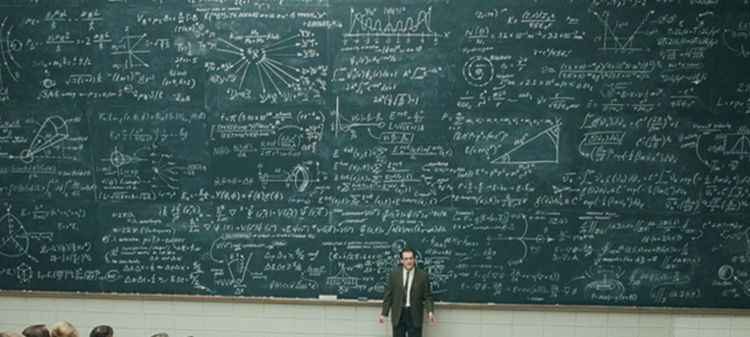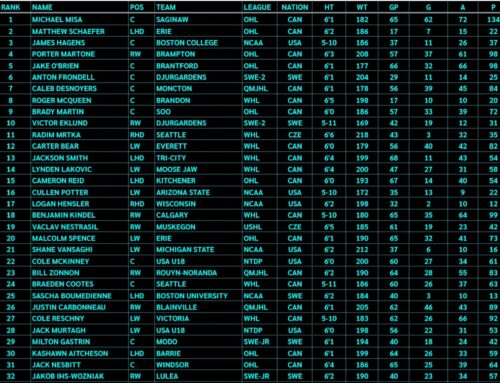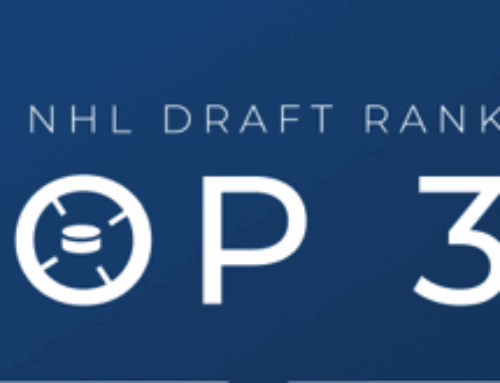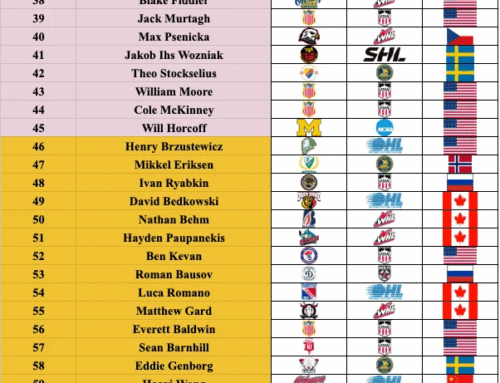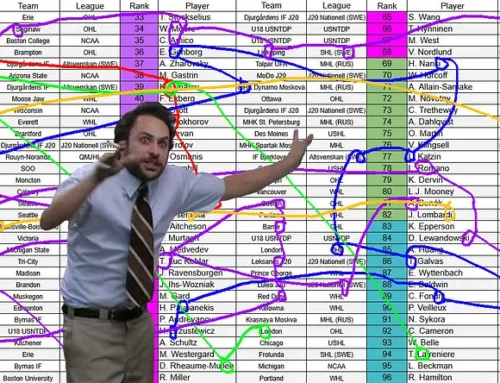Advanced Stats Series: Statistical Trends from 2017-18 Season
couching
2018-03-30
So far in this article we’ve explored the history of hockey statistics as well as a crash course in how to properly use analytics to evaluate a particular situation. While correlations don’t equal causation, this month we’ll be exploring the current trends as the 2017-18 draws to a close. At time of writing, 1174 games have been played league-wide across all 31 teams, which is a decent sample size to look at some high level correlations.
I’ve pulled the current NHL standings as well as Corsica.Hockey’s 5v5 Team Stats splash page to run some correlations between a team’s analytical measures as a whole and more common measures of success such as even strength goals for, goals against and regulation/overtime wins. The metrics that will be used in the correlation will be outlined in a glossary at the end of this piece. The point is to illustrate at a very basic level how certain metrics may point to certain advantages, and how players who excel in a given metric may affect a team’s offense, defense, or overall winning ability. Recall that correlation measures are between 1 and -1, with numbers closest to either end bearing perfect positive or negative correlations.
To start, here is the full set of correlates between all metrics for you to explore:
As expected, goals for percentage and goals for per 60 minutes correlate the strongest here across the board, as does PDO. PDO tracks a team’s save percentage defensively and adds it to their shooting percentages offensively. Some call this a measure of “puck luck” which may be the case in extreme cases, but when you examine who the leaders are (Tampa Bay, Nashville, Toronto, Colorado, and Washington), more often than not, teams that have legitimately good goaltending and objectively deep offensive talent lead the pack. On the opposite end, teams such as Carolina, Buffalo, Pittsburgh, Montreal, and Ottawa appear to be more likely to be shallower, heavier teams, or with extremely poor goaltending. For the record, Pittsburgh, Ottawa and Carolina are the only teams in the NHL with 5v5 save percentages over a full percentage worse than the league average. The relatively wide gap between Pittsburgh (-1.28%) and the New York Islanders (-0.65%) is particularly worth nting to show just how much poor goaltending can factor into a team’s success.
Expected goals for is a major player as well, and is very clearly a stronger correlate than Corsi For percentage as well as any of the deeper metrics broken down individually in most respects. While the correlation is about 60% as strong as the correlation between actual goals for percentage, it is an indicator that team’s gaining and preventing higher danger chances against higher danger shooters is something to strive for over simply preventing shot attempts as a whole. In fact, as this table shows, teams that can prevent high danger events from high danger shooters (xGA/60) actually correlates much more strongly to goals against, wins and points than taking high danger events with high danger shooters (xGF/60) does to goals for, wins and points. Interestingly, taking penalties at even strength correlates higher to wins and points, but again, correlation doesn’t equal causation. If all your team did was take penalties, you likely wouldn’t win many games, so some further exploration into why that might be the case would be warranted.
These conclusions might sound rudimentary, but that’s exactly the point. As is the mantra in this series of articles, the goal of any statistic is to gain an advantage over the competition. Increasing the factors that lead to higher xGF percentages, save percentages and shooting percentage will win you more games. Without tracking saves, there is no save percentage. Without tracking shots, there is no shooting percentage. In 2018, without pinpoint data registering who took a shot from where and against whom, there is no xGF, and as time passes, metrics will only increase in complexity and importance. Getting dangerous chances with dangerous players, and preventing that from happening in your own zone is vital to winning games. Hockey is a noisey sport, and there is clearly much more to be explored, but the point is that there are very clear measures that are more important to generating wins than others, and isolating the factors that better those metrics allows a team to find players who can fill the gaps.
There are two more installments of this series of articles before the NHL draft in June, and in April, the metrics in my large tracking sheet will be explained and a link to the public version of the document will be published. If you’d like some sneak peeks, follow Scouching on Twitter. The May installment will outline some names that may be flying under the radar for the NHL Draft that might be worth exploring further, with a draft recap coming in June. Stay tuned!
Glossary:
GF: Goals For
GA: Goals Against
ROW: Regulation and Overtime Wins
PTS: Points
CF%: Corsi For Percentage (Shot Attempts), calculated as CF/(CF+CA)
CF/60: Corsi For (Shot Attempts) per 60 minutes
CA/60: Corsi Against (Shot Attempts) per 60 minutes
GF%: Goals For Percentage, calculated as GF/(GF+GA)
GF/60: Goals For per 60 minutes
GA/60: Goals Against per 60 minutes
xGF%: Expected Goals For Percentage, calculated as xGF/(xGF+xGA)
xGF60: Expected Goals For
xGA60: Expected Goals Against
PENT: Penalties Taken
PEND: Penalties Drawn
P+/-: Penalty Differential
Sv%: Even Strength Save Percentage
PDO: Shooting Percentage For + Save Percentage


